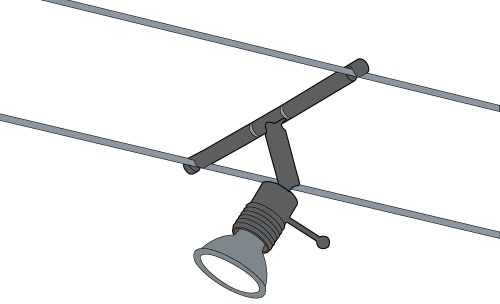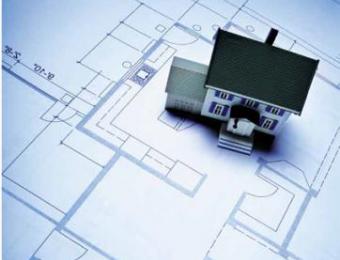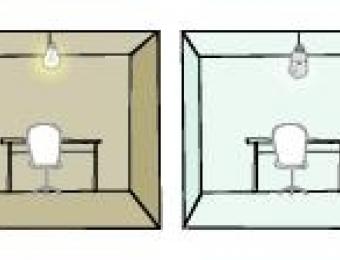
What is a light fitting?
A light fitting is an assembly that contains all the elements of a light. At the most basic level, this always includes some kind of electrical connector, a light socket to hold the globe in place, and the globe itself. Different types of lights will require extra hardware to operate too - halogen dichroic globes require transformers, for example, and fluorescent globes need ballasts if they're not built in.
Types of light fittings
There are countless different variations on light fittings, including (just to name a few):
- Recessed fittings - light fittings that sit flush with the surface they're mounted on - these are mostly commonly either downlights or uplights, which are used to emit a beam of light in a particular direction.
- Strip lights or track lights - Typically either a prefabricated fitting that houses several direcable globe fittings in a strip, or a cable or rail setup which allows lights to be suspended - particularly good in areas with high ceilings.
- Sconces - These are wall-mounted light fittings that typically direct light either upwards or downwards. Sconces can be used for decorative effect or to add emphasis to a particular feature (for example, above a hall table).
- Oyster lights - These are basic ceiling mounted light fittings that provide general lighting to a room.
- Chandeliers - Large decorative hanging fittings that serve as a feature in a room.
- Pendant lights - Lights which hang down on a cable, often adorned with an elaborate decorative shade.
- Picture lights - A type of small wall-mounted light fitting used to illuminate pictures.
- Spot lights - Wall or roof mounted lights that allow you to direct a beam of light in a particular direction, either for the purpose of task lighting or to illuminate a particular design feature.
- Fan-based lights - A light that's integrated into a ceiling fan. Not to be confused with fanlights, which are a type of small window.
How to choose light fittings for your home
In the past, setting up lighting in your home was a pretty basic affair. It wasn't that long ago that it was a simple matter of throwing in a few incandescent fittings or, more recently, long rows of halogen downlights wherever light was needed. Recent changes to regulations, however, mean that now you're only allowed to install 5 watts of lighting per square metre of floorspace in new homes (with a few conditions). These changes mean that lighting now needs to be far more carefully considered!
Choosing light fittings for your home's no small feat. To really be able to know what sort of light fittings you'll need to install where, the kinds of things you'll have to have a clear idea of include:
- How each area will be used
- Roughly where furniture will be positioned
- How daylight (and therefore windows) will be used
- What sorts of materials and colours you're using
- Where task lighting is necessary
- How much power different types of globes consume
- What types of globes will suit different areas
- What sort of fittings are appropriate for those globes
- How many watts of lighting are being used per square metre of floor space
If your lighting's wrong, your house may not pass inspection - which is a big deal. When you're planning your lighting, it's a good idea to consult with a lighting designer, or at the very least ensure that your builder and electrician have made the necessary considerations with respect to how your light fittings are laid out.
Types of globes
Lighting may well be the main part of your electricity bill. Compact fluorescents are the way to go for general lighting. LEDs are very nice for architrave lighting, and generally for as a direct replacement for halogen downlights. Consider directed lighting (for example LED globes) for work areas, rather than brightening up the whole room, so as to have adequate lighting where you are working.
Tungsten halogen lamps (dichroics - or halogen downlights, as they're commonly called) are low voltage lamps and require transformers to operate. Halogen globes use significantly more electricity than the alternatives for the same type of output, so if you're building from scratch it's a very good idea to consider alternatives. LEDs also need transformers and there’s slight delay (about half a second) before they light up after switching on, although they only use a fraction of the electricity consumed by halogen globes. Not all LED globes are created equally though - and it pays to understand what to look for when you're buying them.
Dimmers
Modern dimmers, electronic dimmers that is, don’t waste much energy - something of the order of 5-10% of the total consumed power. Along with your choice of lighting though, it pays to be judicious in the number to be installed. Under the new lighting regulations, the installation of dimmers can also be used as a concession to allow more lighting to be installed. To find out more, discuss your options with a lighting designer or your electrician.





